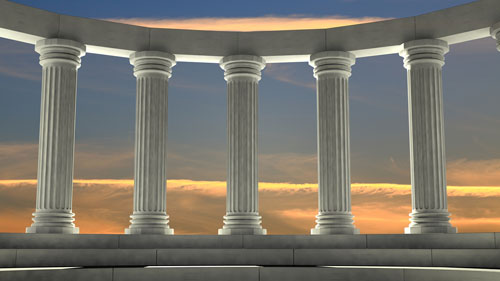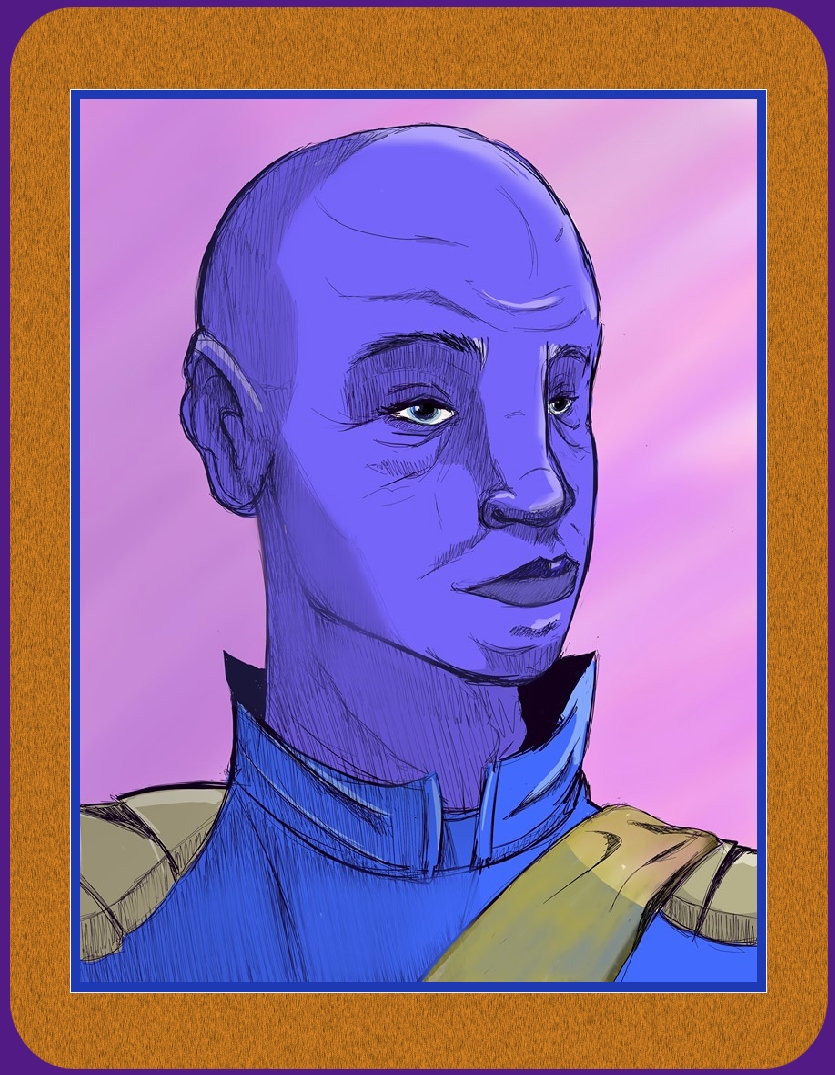
(Omal presents a dissertation on astronomy that had always stood out as one of his best on the subject. Included in a trip just outside our channeling room to look at the Tahoe skies was his pointing out where in the sky the nebula should be which was once a planet where he had been born. Inside again he shows how the stars, planets and moon in the sky were the clocks of our lives ticking off the seconds with every movement they made. The lessons continue as we get to learn about Woodhenge which was near Stonehenge and how the Venus creates a very noticeable cycle in the weather.)
Omal: okay, pause the tape please, go and get your……..
(after a short pause, Omal walking Mark’s body has brought me outside for a rare lesson he and I had done once before during a channeling session Mark and I held on a camping trip with just the two of us)
Russ: it’s on.
Omal: okay, astronomy lesson.
Russ: we are on the extent.
Omal: okay, astronomy lesson. Okay, if you look, you have the moon.
Russ: got it.
Omal: okay now, in a direct line to the moon up high through the trees you see a red, non-flickering object correct?
Russ: uh-huh.
Omal: that is where we are channeling from.
Russ: okay.
Omal: okay, if you go across and you should see through the trees there another non-flickering light, slightly gold in nature. Actually that’s blue, that is…..
Russ: yeah, straight there right?
Omal: yes that is Jupiter. Okay, unfortunately due to the trees…..ahh, you can just see it through the trees. Okay, if you look up high you have Saturn, look directly up.
Russ: right.
Omal: that is a special globular cluster.
Russ: you mean that little cloudy thing there right above us?
Omal: correct.
Russ: there’s three stars right there, looks like Orion’s belt almost.
Omal: no, there’s a lot more than three stars there. I count from here with the eyes I am using, one, two, three, four, five, six…..
Russ: oh there we go.
Omal: seven, eight….
Russ: is that the Pleiades?
Omal: yes.
Russ: ahh, beautiful.
Omal: but further on, through the Pleiades on the other side of the globular cluster that you cannot see is a special place that is now a nebula.
Russ: ahh.
Omal: let us return inside so you do not freeze. You are coughing.
Russ: just the cold in my throat. So what is the special place?
Omal: that is now a nebula?
Russ: yeah, that's your old home planet?
Omal: that once was my home planet.
(it no longer exists, he's that old)
Russ: ahhh, okay……(after getting sat down)......yeah that’s refreshing.
Omal: yes I thought it would be interesting.
Russ: uh-huh.
Omal: a quick astronomy lesson for you.
Russ: indeed.
Omal: okay, when was the last time we gave you an astronomy lesson?
Russ: oh when we went camping.
Omal: correct.
Russ: when we saw Taal’s ship.
Omal: correct. Unfortunately he is not as punctual as one would like.
Russ: oh, he is supposed to be here tonight?
Omal: correct.
Russ: oh. Oh, you mean flying across in the sky?
Omal: yes.
Russ: oh. Oh well, it was a shot.
Omal: well, punctuality can be sometimes a weak point of pilots.......
Russ: yes.
Omal: due to other circumstances apparently.
Russ: no problem.
Omal: okay astronomy, the importance of stars. Now, certain visible things within the night sky, unfortunately the lead was not long enough to take you on a full trip to explain. What we were looking for was Orion, the hunter, Osiris and below Osiris is a very bright star which is?
Russ: Sirius.
Omal: correct. These two pointers tell you something important, they tell you the time of year. With the configuration of stars it tells you the time. Orion and Sirius in the position that they are with the three planets that were pointed out tell you the time of year and their relationship if you know tells you the exact date.
Russ: hmm.
Omal: how does this work? Well, your planets orbit your sun and they will be in only certain positions in certain alignments once every so often. Now by measuring the movement of the surrounding stars in relationship to them tells you the time of year and the exact date because the configuration will appear only once, that exact configuration. So astronomy is not only being able to look at the night sky, it tells you the time, it tells you whereabouts your planet is in the galactic disk. For example, on December the 9th, 1997 Osiris was in night sky flanked by Jupiter, Mars and close to the moon Saturn. Knowing the distance from Saturn to the moon in your night sky how far it measures, knowing how far Saturn is from Mars and Mars is from the moon and knowing how far Jupiter is from Mars, Saturn and the moon, all three of those, gives you the information on the time. Knowing what else is in the night sky gives you the time of year, knowing where the constellations are to present at that time of year gives you the exact date. Now if we were to go back out and stand exactly where we were and look up at the night sky, you would have noticed that there has been movement. Only maybe half of a degree but movement nonetheless. That is the ticking of the clock, how far the moon has moved away or towards Saturn is another indication of time. See we’re now narrowing it down into minutes. Noting how far the moon had traveled in the night sky now brings it down to seconds. You see, astronomy is more than able to help you navigate, it helps you tell the time. Yes?
Russ: I want to insert something real quick. Recently I heard somebody tell me that there is a Stonehenge-like construction that’s been found in Britain that's much bigger than Stonehenge……
Omal: uh-huh.
Russ: and was completely buried.
Omal: uh-huh.
Russ: and it’s complete, it’s not destroyed in any way.
Omal: unfortunately that is half-truths, it is destroyed and it wasn’t destroyed by anybody in particular and it is not that far away from Stonehenge.
Russ: what’s the story on it then?
Omal: basically it rotted.
Russ: oh.
Omal: it was called Woodhenge, wood being easier to work with. Same configuration, just thinner and larger.
Russ: so it was a predecessor to Stonehenge?
Omal: they were present at about the same time.
Russ: I mean was one used as a model for the other maybe?
Omal: no, one served one purpose and the other served another purpose.
Russ: oh.
Omal: different times of the year, different functions.
Russ: okay.
Omal: but, as astronomers, as an astronomy.......what is it tonight with words? One is confused by that...........explain Stonehenge in astronomical terms is quite correct. It is both a lunar and a solar calendar. It is a common misconception that it is purely one, it is both, it is used for both purposes. The history of the nations that worshiped there changes over a period of time so that it was remodeled, rearranged and used differently in different points of the history. Much like the burial practices in ancient Egypt.
Russ: hmm, so essentially what they call the sacrificial stone which is the center of Stonehenge, could either be that or it could actually be a spot from which to chart the planets from.
Omal: correct.
Russ: a sitting spot so that it is a constant point to measure the distance the planets have traveled within the night sky.
Omal: correct. It is very unlikely that it would be offered or used as a human sacrifice spot although it was not unknown at times of great stress, of great difficulty, however that would not be its primary use.
Russ: right. And the same would be said for Woodhenge also.
Omal: correct but let’s get back to the functions of Stonehenge....
Russ: right.
Omal: not as a sacrificial site but as an observatory to observe the procession in the night sky of key stars and constellations. In fact by looking at those stars, the priest astronomers were doing a very important job, they were telling the time, they were telling the seasons and by using calculations, the priest astronomers could calculate when to plant. Now let us move across the globe to the Americas and let us look at a certain movement in the night sky of Sirius. Sirius works on a eight-year cycle but within the cycle……no, let me rephrase that and correct myself……..Venus works on a seven-year cycle and within its orbital path I believe although I am not an astronomer, there are I think four, yes four paths that it follows in its cycle through the night sky of your planet. And where it is tells you what cycle it is in and how the interaction is with your planet because of the cyclical motion or activity of the sun. Now, in its cycle it will pass through certain constellations at certain times.
(a cat meows)
Omal: I beg your pardon.......and with its behavioral patterns if you’re a keen astronomer, you can predict where it will be to the exact second in time 500 years into the future. What purpose this serves is up to the individual. Okay, any questions?
Russ: yeah, a lot of what Stonehenge, the Great Pyramid and the Mayans were interested in was in the position of Sirius….
Omal: uh-huh.
Russ: and I would assume this stems from the Atlantean connection between all three.
Omal: correct and also Venus.
Russ: why Venus? Because of the seven-year cycle?
Omal: correct.
Russ: what would the seven-year cycle have to do with planting or anything?
Omal: a little bit of maths please. Seven years ago was when?
Russ: 1990.
Omal: and what happened in 1990?
Russ: a conjunction?
Omal: no, on your planet.
Russ: oh, an election?
Omal: no.
Russ: that was the Harmonic Convergence right? No it wasn’t.
Omal: getting closer.
Russ: oh yeah, that was the Harmonic Convergence or somewhere or something like that.
Omal: also it was a very dry year.
Russ: oh was it?
Omal: very dry year.
Russ: hmmm.
Omal: seven years before that….
Russ: that’s right I was here, that’s right and it was pretty dry.
Omal: uh-huh, seven years before that was ‘83 correct?
Russ: right.
Omal: what happened in 1983 of that year weather wise?
Russ: I’m going to say another dry year.
Omal: no, it was a very wet year.
Russ: hmm. What, running in seven years cycles…….14 year cycles?
Omal: pretty close to it actually. So, observing over a long period of time where Venus is in its orbital path on one of its four seven-year cycles tells you a lot.
Russ: wow.
Omal: okay it is now 1997 and Venus is actually starting another one of its cycles.
Russ: El Niño.
(Omal claps.)
Omal: took a long time to get there did it not?
Russ: 21 years.
Omal: uh-huh and this is shaping up to be a wet year.
(a record amount of snowfall would fall that winter)
Russ: uh-huh.
Omal: so what does this tell us? It tells us that astronomy of localized astral bodies such as?
Russ: Venus.
Omal: Venus, helps you to work out the cycles. However the cycles aren’t constant unfortunately, they do fluctuate in the weather but as a rule of thumb, it goes wet, dry, wet, dry however there are instances where it will go dry, dry, dry, dry, dry for several hundred years. We will address that at a later time and the fragile nature and the importance of the weather fluctuation in Tia's projections. Thank you Russ, any questions?
Russ: uh-uh.
Omal: okay.
Russ: farewell Omal.
Omal: live long, prosper and………..
